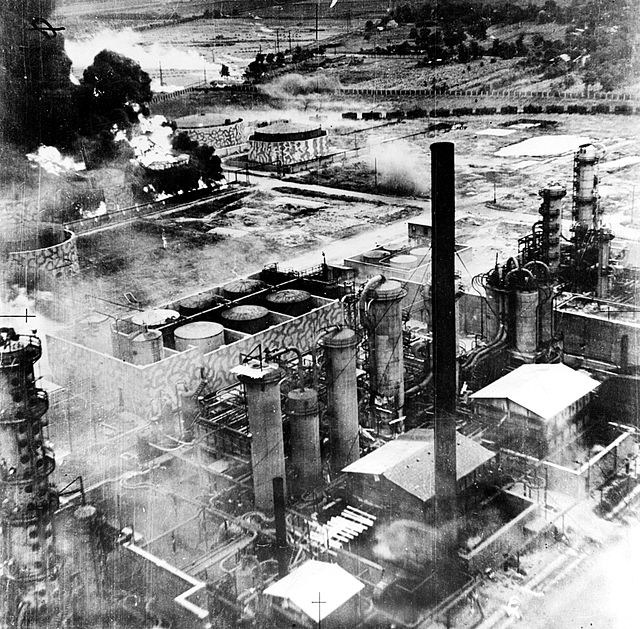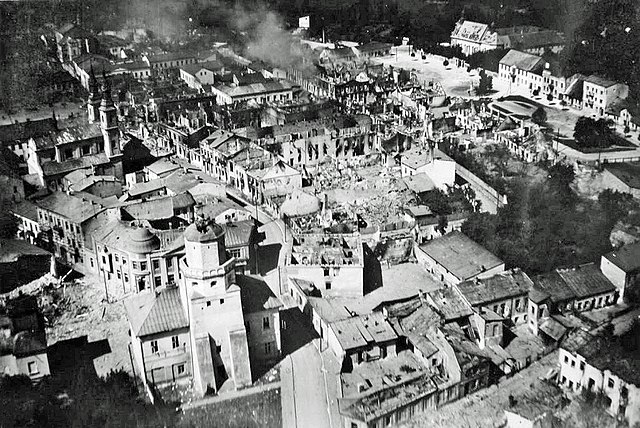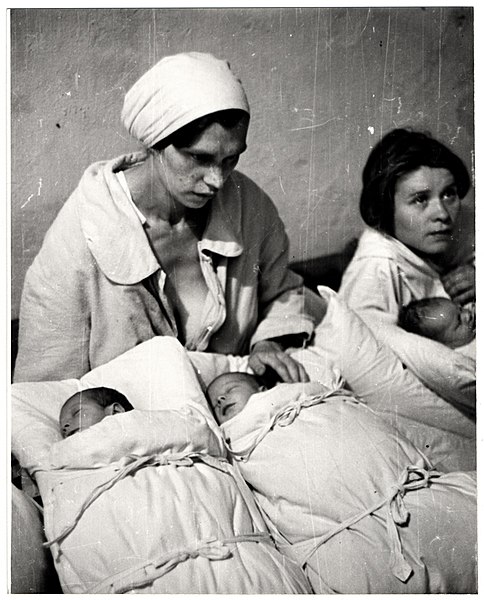Oil campaign of World War II
The Allied oil campaign of World War II pitted the RAF and the USAAF against facilities supplying Nazi Germany with petroleum, oil, and lubrication (POL) products. It formed part of the immense Allied strategic bombing effort during the war. The targets in Germany and in Axis-controlled Europe included refineries, synthetic-fuel factories, storage depots and other POL-infrastructure.
The Sandman, a B-24 Liberator, emerges from smoke over the Astra Română refinery, Ploiești, during Operation Tidal Wave (1 August 1943)
Columbia Aquila refinery at Ploiești in Romania burning after the raid of B-24 Liberator bombers in Operation Tidal Wave
Strategic bombing during World War II
World War II (1939–1945) involved sustained strategic bombing of railways, harbours, cities, workers' and civilian housing, and industrial districts in enemy territory. Strategic bombing as a military strategy is distinct both from close air support of ground forces and from tactical air power. During World War II, many military strategists of air power believed that air forces could win major victories by attacking industrial and political infrastructure, rather than purely military targets. Strategic bombing often involved bombing areas inhabited by civilians, and some campaigns were deliberately designed to target civilian populations in order to terrorize them and disrupt their usual activities. International law at the outset of World War II did not specifically forbid the aerial bombardment of cities – despite the prior occurrence of such bombing during World War I (1914–1918), the Spanish Civil War (1936–1939), and the Second Sino-Japanese War (1937–1945).

A B-24 on a bomb run over the Astra Romana refinery in Ploiești, Romania, during Operation Tidal Wave
Bombing of Wieluń, the first Polish city destroyed by Luftwaffe bombing, on 1 September 1939. In one of the first acts of World War II, German bombers destroyed 70%[citation needed] of all the buildings, including a clearly marked hospital and church, killing approximately 127[citation needed] civilians.
Polish mothers with their newborn infants in a makeshift maternity ward inside a hospital basement during the Bombing of Warsaw by the German Luftwaffe
Warsaw burning after a German bombing of the city. The Luftwaffe air campaign resulted in the deaths of an estimated 20,000 – 25,000 civilians.





